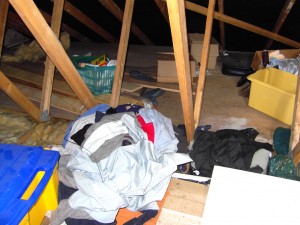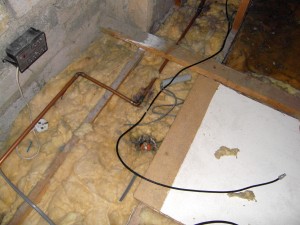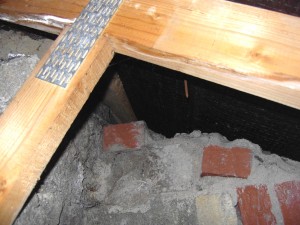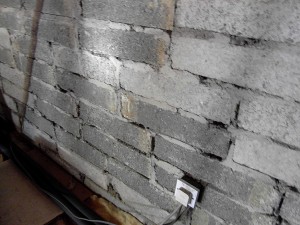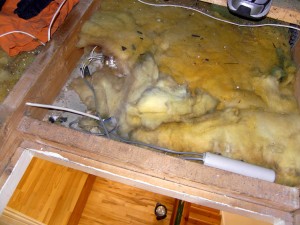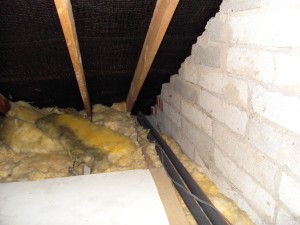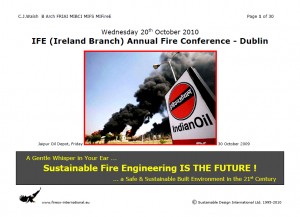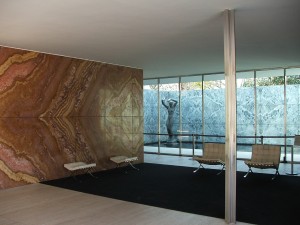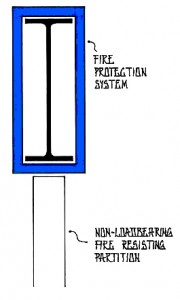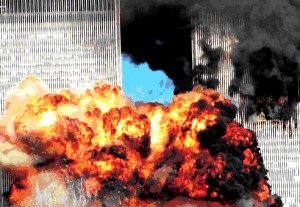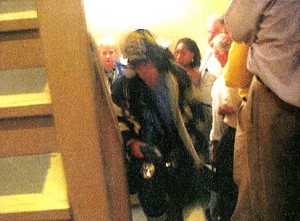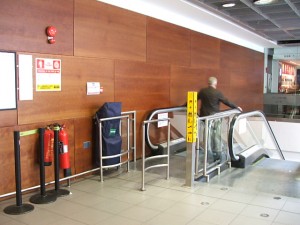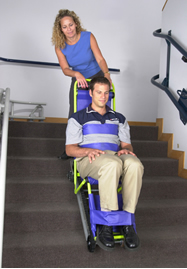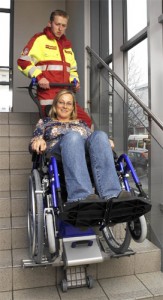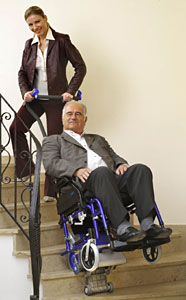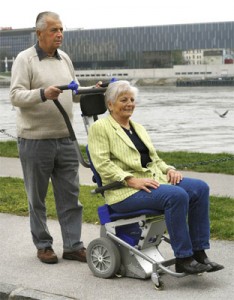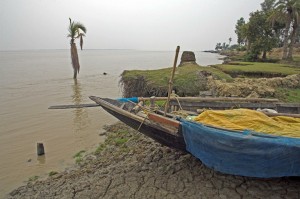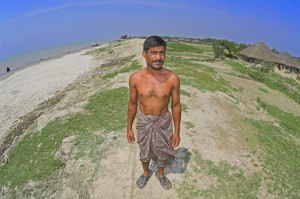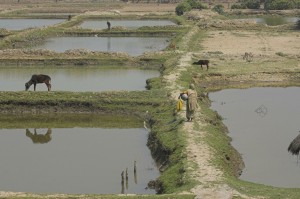On Tuesday last … 9 November 2010 … Ireland’s Office of the Ombudsman issued a Report to the Irish Oireachtas (the Dáil and Seanad) … in accordance with Section 6(7) of the 1980 Ombudsman Act … concerning an Investigation based on more than 1,000 individual complaints made, since 1985, on behalf of older people who were unable to get long-term nursing home care from their health boards … now the Health Service Executive (HSE).
Please Note Well … this Report is not just about Older People !
This document raises a number of very serious and fundamental issues concerning our current system of Dysfunctional National Governance in Ireland. Every Irish person should, therefore, expend a small bit of time and effort in making themselves familiar with these problems … especially in the run-up to any by-elections … or, perhaps, even a general election … and certainly before we enter a prolonged period of being hammered in a Draconian Series of 4 Budgets !
This Report places a major question mark over the positions of Ms. Mary Harney T.D., Minister for Health & Children (a woman of strong ‘Boston-esque’, neo-liberal and anti-social convictions) … and the Senior Civil Servants (plural !) in Her Department.
And don’t be fooled into thinking, either, that the Department of Health & Children is our only dysfunctional national ministry ! See my previous Posts.
Ms. Emily O’Reilly, Ireland’s Ombudsman, deserves our full support !
.
This is the Full Ombudsman’s Report …
9 November 2010 – Office of the Ombudsman
WHO CARES ? An Investigation into the Right to Nursing Home Care in Ireland
Click the Link Above to read and/or download PDF File (621kb)
.
Conclusions (Executive Summary)
The conclusions of this investigation are easily stated:
- The Health Act 1970 has required the State to provide nursing home care for those who need it.
- It is an open question as to whether that obligation continues in place, notwithstanding recent amendments to the Health Act 1970.
- The State has failed consistently to meet this obligation over four decades.
- The State has failed over that same period, and despite repeated commitments (especially since 2001), to amend the law so as to bring actual practice and legal obligations into harmony.
- Very many people over these decades have been deprived of their legal entitlement.
- Access to nursing home care over this period has been marked by confusion, uncertainty, misinformation, inconsistency and inequity.
- Very many people over this period have suffered significant adverse affect.
- This situation has been allowed to continue with the full knowledge and consent of the responsible State agencies.
- Arising from these failures, the State is now facing several hundred legal actions from, or on behalf of, people seeking compensation for the costs incurred in having to avail of private nursing home care.
- These particular failures, which have been allowed to continue for decades, point inevitably to wider failures in government.
.
The conduct of the investigation and the preparation of this report for the Oireachtas have been marked by an unprecedented level of rancour and disagreement.
The Department, in particular, has laid a multiplicity of charges against the Ombudsman regarding the manner in which the investigation has been conducted. Amongst its charges are:
- that the Ombudsman exceeded her jurisdiction in undertaking this investigation ;
- that the Ombudsman failed to abide by fair procedures particularly in relation to the provision of a draft version of the investigation report ;
- that the Ombudsman displayed prejudice and objective bias in the course of the investigation ;
- that the Ombudsman displayed arrogance in purporting to interpret the law ;
- that the Ombudsman has purported to deny the State bodies concerned their right to have the litigation (detailed in this report) determined by the Courts.
The Minister, acting on behalf of the Government, has informed the Ombudsman that the Government supports the submission of her Department in which these charges are made. While the HSE, in general, has been more temperate, it has specifically charged the Ombudsman with attempting to influence the outcome of court proceedings. In effect, the Department and the HSE are saying that the Ombudsman undertook this investigation in bad faith.
.
In fact, the Ombudsman’s motivation in producing this report was five-fold:
1. To highlight the very significant difficulties faced over several decades by families seeking to make arrangements for long-term nursing home care for a family member.
2. To represent, in many instances through their own words, the distress and upset (including financial) of people who complained to the Ombudsman’s Office over the years in relation to nursing home care.
3. To highlight the inadequacy and the tardiness of the State’s responses to these problems.
4. To raise the issue of whether and, if so how, people adversely affected should have some recognition of having been failed by the State.
5. To raise wider questions of governance prompted by the practices highlighted in this report.
.
In the 2001 Report: ‘Nursing Home Subventions’, the then Ombudsman expressed the view that the issues of bad administration dealt with in that report reflected significant dysfunction in our system of government. That view could, with only minor contextual amendments, be reproduced in full here with the same validity as in 2001.
The then Ombudsman identified deficits in three sets of relationships which, in his view, contribute significantly to this dysfunction.
These relationships are:
The Relationship between the Oireachtas and the Executive – the Constitutional model whereby the Legislature makes the laws and the Executive implements them has become a fiction; in fact, it is the Executive (Government) ‘which decides policy; which proposes legislation and ensures its passage through the Oireachtas and, subsequently, in its executive capacity ensures that the laws are implemented’. Parliament is relatively powerless and not in a position to exercise the role (including that of calling the Executive to account) envisaged in the Constitution.
Relationships within the Executive – in the past, there was a clear division of functions as between the political (Ministerial) side and the official side. The integrity of the governmental process depended, to a large extent, on the official side being seen to be non-political; the tension inevitably generated by this division was regarded as necessary and healthy. “Good government”, as Professor Séamus Ó Cinnéide put it, “depended on a certain distance and balance between the two sides”. This distance and balance no longer applies and, again to quote Professor Ó Cinnéide, this change is part of “an unspoken revolution in our system of governance”. Again, another key element in the overall model of government has been discarded or, at the very least, diluted considerably.
Relationship between Department and Health Boards – similar to the relationships within the Executive, the relationship between the Department and the health boards is most effective where the latter are prepared to keep a certain distance from the former and to exercise, as necessary, their status as independent, statutory bodies. But the health boards, for the greater part, failed to act independently; to ‘a large extent, health boards appear to act in relation to the Department as if they are satellites rather than independent bodies […] The majority of the health boards were prepared to continue with a scheme, about which they increasingly had doubts, for as long as the Department told them they should.’
The present Ombudsman comments on these three areas from the perspective of today and concludes that, if anything, matters have disimproved rather than improved. In relation to the role of the Oireachtas, the Ombudsman observes that parliament has been sidelined and exercises only a limited role. Reflecting the views of many commentators, the Ombudsman observes that our governmental arrangements are undermined significantly by virtue of having an Executive which is too powerful and a Legislature which is too weak.
As regards relationships within the Executive, and taking the example of the Department of Health & Children, the Ombudsman observes that the distance between Ministers and senior civil servants – which was a necessary feature of our model of government – no longer exists. In the wider context of the health service, the Ombudsman draws attention to a continuing confusion as to the respective roles of the HSE and of the Department.
.
Findings (Executive Summary)
The Ombudsman finds, in relation to the type of complaints dealt with in this investigation, that the health boards (HSE) failed to fulfil their obligations to older people under section 52 of the Health Act 1970 and that this failure came about with the full knowledge and agreement of the Department. As a result of these failures, very many older people (and their families) suffered significant adverse affect over several decades. The Ombudsman finds that these failures of the health boards (HSE) and of the Department constitute (to use the language of the Ombudsman Act) actions “based on an undesirable administrative practice” and also actions “contrary to fair or sound administration”. These findings are at a level of generality as this investigation is an ‘own initiative’ one rather than one linked to specific, named complainants.
The Ombudsman takes the view that the HSE and the Department should acknowledge formally that the State, in the case of older people needing long-term nursing home care, has not been meeting its obligations under section 52 of the Health Act 1970. This acknowledgment could be in the form of a public statement from the two bodies and could be made on a ‘without prejudice’ basis.
There is no satisfactory solution to the issue of whether there should be financial redress for those who have been adversely affected by the State’s failure to provide long-stay care. The financial consequences for the State, in meeting a recommendation to compensate all those adversely affected, would be enormous, potentially running to several billion euros. In present circumstances, it appears this is not a cost which the State can meet. Nor is it likely that the State will be in a position to meet this type of charge for many years to come. On the other hand, not to recommend financial redress, might be seen as condoning maladministration and allowing bad practice to go unchecked. It would also mean that individual people and their families are being left with nowhere to turn and with a financial burden to bear which, as the Ombudsman understands the law, should have been borne by the State.
With considerable reluctance, the Ombudsman takes the view that in present circumstances the public interest is best served in not recommending any specific redress in the sense of financial compensation for those affected adversely. The Ombudsman suggests that some thought be given within the Department to devising some limited scheme under which families which have suffered serious financial hardship might be assisted. One possibility, in this regard, is that the existing Supplementary Welfare Allowance scheme might provide the statutory mechanism for the making of one-off payments, based on exceptional need, for such people affected adversely by the State’s failure to provide nursing home care for a family member.
The Ombudsman feels it is vital that steps be taken to prevent situations, such as described in this report, coming about in the future; or, where they do come about, there should be mechanisms in place to deal with them at an early stage. The Ombudsman proposes that, in future, measures to deal with such instances should be conducted with full transparency and in the public domain. The Ombudsman proposes the creation of an independent group whose function would be to advise Government on how best to handle legal actions, or threatened legal actions, which involve numbers of people and which arise from a contended failure of a State agency to meet statutory obligations particularly in instances where those claimed to be affected belong to a vulnerable group in society. Past examples of situations where such an approach might have been helpful include:
– the army deafness claims ;
– the contaminated blood claims ;
– education rights of autistic children ;
– provision of secure care for children ; and
– the right of older people to long stay nursing home care.
This proposal is based on the premise that the State should react to such situations, not simply in legalistic terms, but in terms which have regard both to legal rights (including human rights), to the State’s finances and the overall public interest. The proposal envisages that, while ultimate legal responsibility for dealing with such claims will continue to rest with the State (and its relevant agency), the direction of the State’s response should have regard to the advice of this group. Amongst the options for this group would be that of stating a case to the High Court, perhaps at an early stage, in order to get legal clarity where that is needed. The overall thrust of this proposal is that the State’s response to situations of this kind should be speedy, be made at an early stage, and be based on considerations of fairness and the public good rather than, as tends to happen at present, being defensive, combative and legalistic.
Some thought might be given to the possibility of such a group acting as adviser to the Attorney General in fulfilling the role of guardian of the public interest or, alternatively, that this group would replace the Attorney General in fulfilling that role. In any case, there is certainly considerable scope for improving our governmental mechanisms with a view to ensuring that, where these major issues arise, they will be handled always with a view to securing the public interest.
Emily O’Reilly – Ombudsman – November 2010
.
.
END
